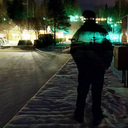0 Likes
The earliest settlement was a Late Bronze Age village at Baugy. Montreux lies on the north east shore of Lake Geneva at the fork in the Roman road from Italy over the Simplon Pass, where the roads to the Roman capital of Aventicum and the road into Gaul through Besançon separated. This made it an important settlement in the Roman era. A Roman villa from the 2nd-4th centuries and a 6th–7th century cemetery have been discovered.
In the 12th century, viticulture was introduced to the region, and the sunny slopes of the lake from Lavaux to Montreux became an important wine-growing region. Montreux is first mentioned in 1215 as Mustruel.In 1295, the Bishop of Sion sold the parish of Montreux to Girard of Oron. In 1317, it was split between the Lords of Oron (Le Châtelard) and the Counts of Savoy (Les Planches).A Brotherhood of the Holy Spirit administered estates and a hospital in Montreux starting in about 1309.
The region was subject to various princes, most notably the princes of Savoy from the south side of the lake. They unified the territory which comprises the present canton of Vaud and were generally popular sovereigns.
After the Burgundian Wars in the 15th century, the Swiss in Bern occupied the region without resistance, an indication of the weakness of the princes of Savoy. Under Bernese rule (1536–1798) it belonged to the bailiwick of Chillon (renamed in 1735 into the bailiwick of Vevey).
The Reformation made the region around Montreux and Vevey an attractive haven for Huguenots from Italy, who brought their artisanal skills and set up workshops and businesses.
The abbey of Les Echarpes blanches was founded in 1626.
In 1798, Napoleon liberated the region from the Bernese. In the 19th century, the tourist industry became a major commercial outlet, with the grand hotels of Montreux attracting the rich and cultured from Europe and America.
Starting in the 19th Century there were three independent municipalities that shared a central authority. This county council was made up of four deputies from Le Châtelard, two from Les Planches and one from Veytaux. The church, the market hall of La Rouvenaz, the secondary school (the building was from 1872 and 1897) and the slaughter-house (1912) were all owned by the county council. Each municipality had its own taxes and a mayor. In 1962, the municipalities of Le Châtelard and Les Planches merged, while Veytaux remained independent.
...




